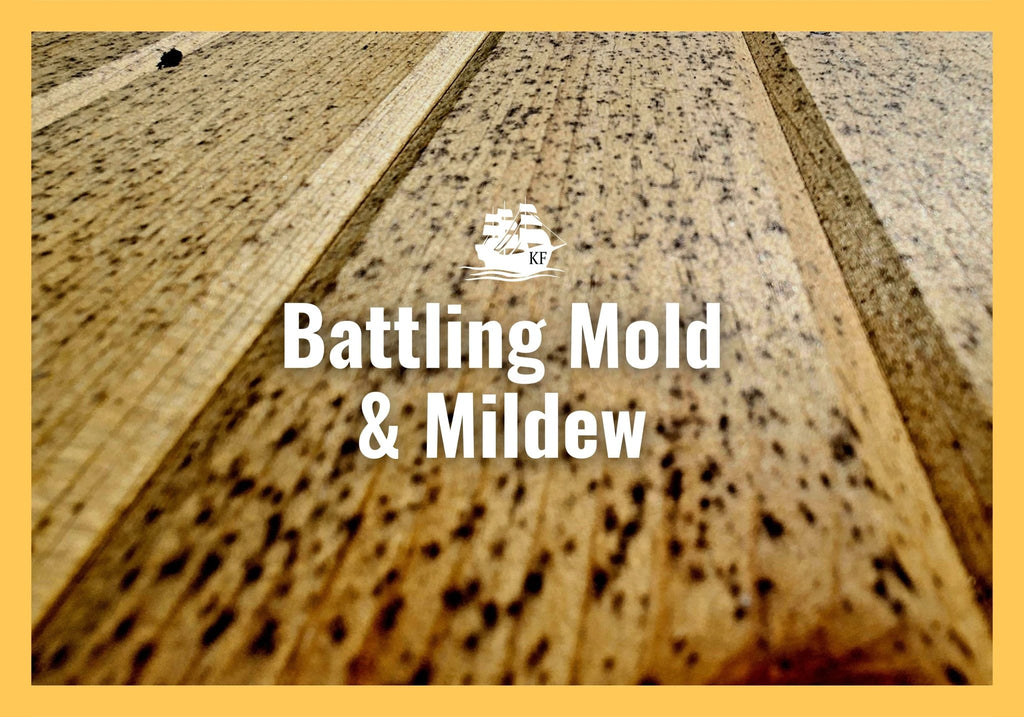Wood, a timeless and versatile material for various indoor and outdoor applications, enhances aesthetics while providing durability. Proper care and maintenance are essential to ensure the longevity and beauty of wooden surfaces. One common challenge faced by wood enthusiasts is mildew growth, which can not only be unsightly but also detrimental to wood. We’ll delve into a wood enthusiast, and oil expert’s experiences and insights regarding mildew formation and its prevention using raw and boiled oil treatments.
Understanding Mildew Formation
Mildew is a frequent issue for wood surfaces, particularly in outdoor settings with elevated moisture and humidity levels. From our expert’s experience, mildew tends to form after treating wood with raw oil, especially when applied to wood that is already in substandard condition. Raw oil, while providing some protection to wood, proves insufficient in preventing mildew growth independently.
The Significance of Clean and Sanded Wood
A crucial aspect of mildew prevention entails ensuring that the wood is clean and freshly sanded if its surface has significantly grayed over time. Weathered wood's rough surface can lead to increased absorption of both oil and moisture, ultimately resulting in prolonged drying times and heightened susceptibility to mildew. Therefore, meticulous preparation of the wood surface is imperative to achieve optimal results.
Addressing Mildew
Should mildew appear on a wood surface treated with raw oil, it can be effectively eliminated using household cleaners or soap. Notably, this cleaning process should have no adverse effects on the oil treatment; in fact, it may aid in removing excess oil, a potential contributor to the mildew issue.
Mildew Prevention with Boiled Oil
For more robust mildew prevention, our expert recommends using boiled oil with driers for outdoor wood applications. Boiled oil not only dries rapidly but also toughens the wood surface, rendering it less susceptible to moisture absorption. Reduced moisture content on the wood surface significantly diminishes the likelihood of mildew growth, making boiled oil the superior choice for outdoor wood protection.
Application of Boiled Oil Post-Mildew Removal
It's essential to note that any wood surface previously treated with raw oil can subsequently be treated with boiled oil. Therefore, in cases of mildew growth following raw oil application, the mildew can be cleaned off, and the wood can be further safeguarded with boiled oil for enhanced protection.
Distinguishing Mildew from Mold
Our expert emphasizes that they have only encountered mildew and not true mold on wood surfaces. While mildew and mold share some similarities, it's crucial to differentiate between the two. Mildew is a surface fungus that is relatively easier to remove, whereas mold penetrates deeper into the wood and can pose more formidable challenges when eradication is necessary.
Mildew formation on wooden surfaces is a prevalent issue, particularly in outdoor environments with elevated moisture levels. To combat mildew effectively, thorough wood preparation, regular cleaning, and a carefully chosen oil treatment are imperative. While raw oil remains an option, it may not provide adequate standalone protection, making boiled oil with driers the superior choice for outdoor wood applications. By adhering to these recommendations, you can relish the beauty of wood surfaces for years to come, free from the concerns of mildew.


Leave a comment: